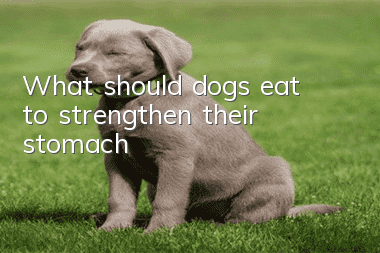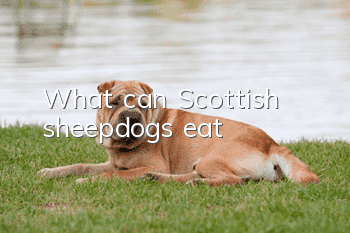How to judge whether a German Shepherd is good or bad

Head
The head is noble, with simple lines, strong but not bulky. However, the overall head should not be too slender and should be in proportion to the body. The male's head is obviously majestic, while the female's head is obviously soft.
Expression: sharp, smart, and calm. Eyes: Medium in size, almond-shaped, slightly slanted, not prominent. Make the color as dark as possible. Ears: Slightly pointed, well proportioned to the head, forward, erect when focused, ideally (ear posture) when viewed from the front, with the center lines of the ears parallel to each other and perpendicular to the ground. Cropped or lopped ears are disqualifying.
Viewed from the front, the forehead is moderately arched, the head is slanted and long, the muzzle is wedge-shaped, and the stop is not obvious.
Muzzle: Long and strong, with the outline parallel to the outline of the head.
Nose: black. If the nose is not completely black, it will be disqualified. The lips fit well and the jaws are very strong.
Teeth: 42 teeth, 20 upper jaw teeth and 22 lower jaw teeth, strong teeth, scissors bite. An overshot or pincer bite is undesirable, and an undershot bite is a disqualification. The dentition is complete. The absence of any teeth other than the first premolars is a serious fault.
Neck
The neck is strong and muscular, well defined and relatively long, in proportion to the head and free of loose skin. When he is concerned or excited, the head is raised and the neck is held high. Otherwise, the typical posture is to extend the neck forward (supporting the head) rather than upward, so that the head is slightly higher than the shoulders. Especially when exercising.
Topline
The withers are highest and slope back, transitioning into a straight back. The back is straight and very stable, without any sag or arch. The back is rather short, and the overall impression of the body is deep and solid, but not bulky.
Breasts
Starts at the sternum, is full, and goes down between the legs. The chest is deep and broad, not shallow, giving ample room for the heart and lungs, and projects forward, with the sternum projecting in front of the shoulder blades when viewed in profile.
Ribs
Well-expanded and long, neither barrel-shaped nor flat chest. The ribs extend down to the elbow level. Correct rib organization will allow the elbows to move freely forward and backward when the dog is trotting. Ribs that are too round will affect the movement of the elbow and cause the elbow to evert; ribs that are too flat or short will cause the elbow to bend inward. The ribs are set well back, keeping the loin relatively short. The abdomen is firm and not paunchy. The lower abdominal curve is only moderately lifted at the waist.
Waist
Viewed from above, it looks wide and strong. Viewed from the side, the length from the last rib to the thigh is incorrect and undesirable. The croup is long and gradually sloping.
tail
The hair is thick and extends from the tail vertebrae to at least the hock. The tail blends smoothly into the croup and is set low, not too high. When at rest, the tail hangs straight down and is slightly curved into a saber shape. It is slightly hook-shaped, sometimes tilted to one side of the body, and is a fault (to the extent that it spoils the overall appearance). When the dog is excited or in motion, the curve will intensify and the tail will be raised, but never curled beyond the vertical line. A short tail, or one that is stiff at the end, is a serious fault. Tail docking is a disqualification.
Forequarters
The shoulder blades are long and sloping, lying flat and not very far forward. The upper arm and shoulder blade form a right angle. The shoulder blades and upper arms are well muscled. The forelimbs are straight from any angle and the bones are oval rather than round. The pasterns are strong and flexible, forming an angle of 25 degrees from the vertical. The dewclaws on the forelimbs can be removed but are usually left intact.
The feet are short, the toes are compact and rounded, the pads are thick and stable, and the toenails are short and dark black.
Hindquarters
Viewed from the side, the entire thigh tissue is very wide, and the upper and lower thighs are muscular, stable, and at right angles as much as possible. The upper thigh bone is parallel to the shoulder blade, while the lower thigh bone is parallel to the upper arm bone. The metatarsals (the part between the hock and the toe) are short, strong, and close together. Dewclaws, if present on the hind limbs, must be removed. The feet are the same as the forelimbs.
Coat
The ideal dog has a double coat of medium length. The outer coat should be as dense as possible, straight, coarse, and flat against the body. A slightly wavy coat, usually of a bristly texture, is permitted. The head, including the inside of the ears, forehead, legs and paws are covered with shorter hair, and the hair on the neck is long and dense. The hair on the forelegs and behind the hind legs is slightly longer, extending to the pasterns and hocks respectively.
Faults: Soft coat; silky coat; excessively long outer coat; woolly coat; curly coat; open coat.
Color
German Shepherd dogs come in many colors, and most colors are allowed. Intense colors are preferred. Dull color, fading, bluish and liver tones are serious faults. White dogs are disqualified.
Gait
The gait of the German Shepherd is a trot. His body structure determines that he can do his job well. General impression: The gait is beyond imagination, elastic, very relaxed, smooth and rhythmic, with very long strides and very low frequency. When pacing, the stride length is large because the stride lengths of the forelimbs and hind limbs are very large. When trotting, the stride length of the front and rear limbs is not that large, but the overall stride length is still quite large, and the movements are powerful but relaxed. Because the movements are coordinated and balanced, the gait is stable, just like a well-run dog.Oil-lubricated machines are the same. The feet are very close to the ground whether they are extending forward or pushing back. In order to achieve the ideal gait of this breed, very well developed muscles and strong ligaments are required. The driving force of the hindquarters, through the back, delivers strong power (slightly upward) to the entire body and propels the body forward. (The hind limbs) stretch a long distance under the body, step on the footprints left by the front paws, the hind paws grip the ground tightly, and the hock joints, hind stifle joints, and upper thighs begin to move, and the back kick is performed. Until the movement of the hind limbs is completed, the hind feet are always close to the ground and move smoothly. An overextended hind limb will cause one hind paw to fall outside the footprint of the front paw and the other rear paw to fall inside the footprint of the front paw. Such movement is not a fault unless the dog deviates from the correct walking straight line and moves to one side. diagonally.
- What should Samoyeds eat to keep their hair healthy?
- What do poodle dogs eat?
- How to raise a poodle dog
- What vegetables should dogs eat?
- How to take care of Bichon Frize during pregnancy
- What should I do if my little Pomeranian doesn’t eat dog food?
- How to feed a little corgi
- What is good for puppies to eat?
- What's going on with Bichon Frize if he doesn't eat and has no energy?
- What should German Shepherds eat to make them grow faster?



